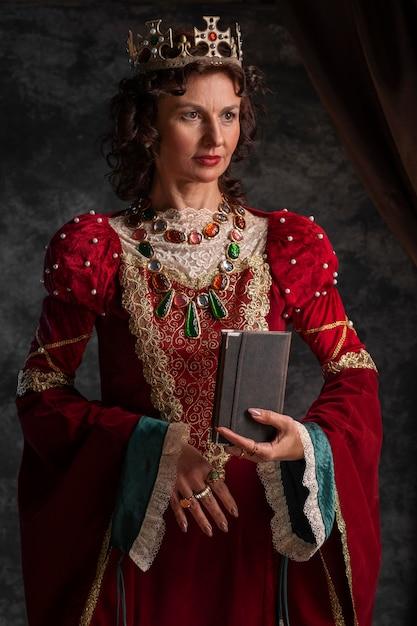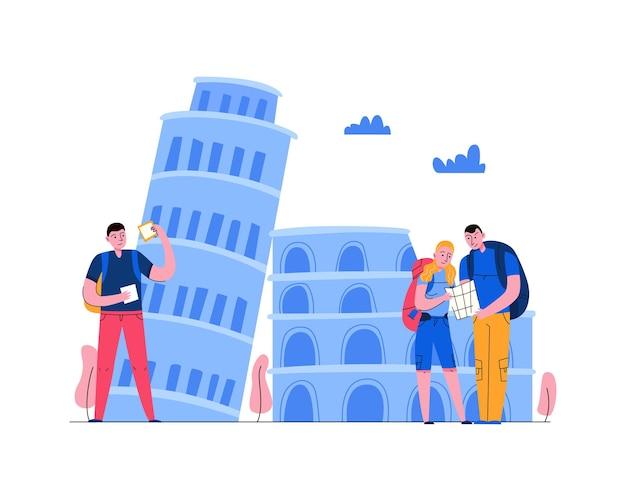The Italian Renaissance, a remarkable period of art, literature, and intellectual growth, holds a significant place in history. But have you ever wondered why this cultural revolution specifically blossomed in Italy? In this blog post, we will explore and unravel the three key reasons behind Italy’s prominence in the Renaissance movement. But before we delve into that, let’s take a moment to understand what the Italian Renaissance is truly known for and what made it a unique era in history.
During the Renaissance, Italy flourished under the rule of powerful city-states and wealthy families, creating an ideal environment for innovation and creativity to prosper. Humanism, a philosophical and intellectual movement that emphasized the importance of human potential and achievements, played a crucial role in shaping the Italian Renaissance. This newfound interest in humanism, combined with Italy’s abundance of artistic talent, created the perfect breeding ground for a revolution in art, literature, and knowledge.
Now let’s travel back in time and discover the three compelling reasons why the Renaissance began in Italy.

The Influential Factors Behind Italy’s Renaissance
Italy is renowned for its rich artistic and cultural heritage, and one significant period that shines brightly in its history is the Renaissance. This transformative movement swept through Europe from the 14th to the 17th century, but one may wonder why Italy, in particular, served as its epicenter. In this subsection, we will explore three compelling reasons why the Renaissance began in Italy and how it left an indelible mark on the world.
1. Geographic Marvels and Trade Networks
Italy’s geographical location played a pivotal role in the Renaissance’s birth. Situated at the crossroads where Europe meets Africa and Asia, Italy enjoyed exceptional access to trade routes that connected various civilizations. The Mediterranean Sea became a bustling hub of commerce, fostering cultural exchange and the inflow of knowledge from diverse regions. Merchants brought not only goods but also ideas, sparking intellectual curiosity and igniting the flames of human creativity.
2. Patronage and Wealthy Elite
Italy’s thriving cities, such as Florence, Rome, and Venice, were home to a prosperous and influential elite class. Wealthy patrons, known as mecenati, emerged as key supporters of the arts, sciences, and humanities. These patrons invested their fortunes in the commissioning of artwork, architecture, and literature, thus providing the necessary resources for talented individuals to flourish. The mecenati‘s patronage created an environment where artists and scholars could dedicate their time and efforts to pursuits that would shape the Renaissance.
3. Rediscovery of Ancient Knowledge
The Renaissance was characterized by a fervent desire to revive the wisdom of the classical world. Italy’s historical connection to ancient Rome, coupled with its access to Byzantine and Arab manuscripts, allowed scholars to delve into the realms of Greek and Roman philosophy, architecture, literature, and science. By studying works by thinkers like Plato, Aristotle, and Cicero, Italian intellectuals sought to bridge the gap between their own era and the great civilizations of the past. This intellectual revival laid the foundation for the transformational changes that transpired during the Renaissance.
Italy’s invaluable contribution to the Renaissance stemmed from its favorable geographic location, the patronage of the wealthy elite, and the rediscovery of ancient knowledge. The convergence of these factors set the stage for a cultural and artistic explosion that would forever shape Europe and the world. By understanding the reasons behind Italy’s pivotal role in the Renaissance, we gain insight into the power of historical circumstances and human ingenuity in reshaping the course of civilization.
So there you have it! Italy’s influence during the Renaissance was nothing short of remarkable, and we can still witness its impact to this day. Explore the streets of Florence, marvel at the masterpieces of Michelangelo, or immerse yourself in the works of Leonardo da Vinci, and you’ll uncover the legacy of an era that pushed the boundaries of artistic expression and forever altered the course of human history.

FAQ: 3 Reasons Why the Renaissance Started in Italy
Who was the ruler of Italy during the Renaissance
During the Renaissance era in Italy, there was no single ruler who governed the entire country. Instead, Italy was fragmented into various city-states, each with its own ruler. Some of the prominent city-states during this time included Florence, Venice, and Milan, each led by influential families. So, it’s safe to say that Italy was a bit like a Renaissance version of “Game of Thrones” with competing rulers vying for power.
What is Italy known for in the Renaissance
Ah, the Italian Renaissance, the golden age of artistic and intellectual genius! Italy became the epicenter of cultural development, birthing some of the greatest artistic, literary, and architectural achievements in history. Think of da Vinci’s masterpieces, the intricate sculptures of Michelangelo, and the breathtaking architecture of Brunelleschi’s dome in Florence. Italy was a hotbed of creative expression and cultural innovation during this time, and it left a lasting impact on the world.
What is Humanism in the Italian Renaissance
Ah, Humanism, not to be confused with some sort of Renaissance version of Pilates or Zumba. Humanism was an intellectual movement that placed the focus on human potential and achievements. It emphasized the importance of education, literature, and the attainment of knowledge and skills. These humanist thinkers were all about ditching the old medieval ways and embracing the wonders of the human mind. They believed in the power of reason and critical thinking – two things we could probably all use a bit more of these days.
Can Italy boast of having an army
Oh, absolutely! Italy might be renowned for its delicious gelato and mouthwatering pasta, but it also had a military force to be reckoned with during the Renaissance. However, it’s important to note that Italy wasn’t a single unified entity at the time. Each city-state had its own military forces, like Florence’s Condottieri (a fancy Italian term for mercenaries). These guys were no pushovers; they knew their way around swords, pikes, and cannons. So, if you’re picturing soldiers in stylish Renaissance attire battling it out on the cobblestone streets, well, you’re not too far off!
What was life like in Renaissance Italy
Ah, life in Renaissance Italy was a fascinating mix of grandeur and grit. It was a time of great social change, where the rigid structures of medieval society began to crumble. The rich and powerful flaunted their wealth and indulged in artistic patronage, while the common people toiled to make ends meet. It was a time of great contrasts, where magnificent palaces stood side by side with humble peasant dwellings. Social hierarchies were shifting, and new opportunities for social mobility emerged. It was a time of both excitement and uncertainty, just like current episodes of your favorite reality TV show!
What were two things that flourished during Italy’s Renaissance
Oh, Italy was like a giant cultural fermenting vat during the Renaissance! Two things that absolutely thrived were art and commerce. Italian painters, sculptors, and architects reached new levels of artistic brilliance, creating works that continue to leave us in awe to this day. And when it came to commerce, Italy was in the driver’s seat. Trading hubs like Venice and Genoa became economic powerhouses, facilitating the flow of goods and ideas throughout Europe and beyond. It was like one big Etsy shop, except with gondolas and fewer hipsters.
What are the three primary reasons why the Renaissance blossomed in Italy
Ah, why did the Renaissance choose Italy as its lucky birthplace? Well, here are three juicy reasons that will make your noodle spin:
1. Wealthy Patrons Fueling the Fire
Italy was rocking some serious bling during the Renaissance. Wealthy and influential patrons, such as the Medici family, had money to spare and a knack for supporting the arts. They were like the Renaissance equivalent of a modern-day sponsor, investing in talented individuals and allowing them to focus on their artistic pursuits. With patrons like these, artists and thinkers had the freedom and resources to push boundaries and create mind-blowing works of genius.
2. Geographical Goodies
Italy hit the geographical jackpot during the Renaissance. Its central location in the Mediterranean made it a hub of trade and cultural exchange. As a result, Italian city-states were exposed to a delightful mix of ideas and influences from the Byzantine Empire, Northern Europe, and the Islamic world. They were like sponges, absorbing all these diverse influences and setting the stage for a cultural explosion. It was a Renaissance melting pot, minus the fondue but with a whole lot more artistic flair.
3. A Blast from the Past
Italy had a little something special hidden in its historical closet: its rich Roman heritage. The ancient ruins that dotted the Italian landscape acted as a powerful inspiration for Renaissance thinkers and artists. They saw the magnificence of ancient Rome and thought, “Hey, let’s bring that back!” They dug into the ancient texts, studied the architecture, and channeled the spirit of the mighty Romans. This newfound fascination with the classical world gave birth to a whole new artistic style: the glorious Renaissance Classicism.
And there you have it! Three tasty slices of Renaissance life in Italy. Buckle up, because the Renaissance ride is about to get even more captivating!
